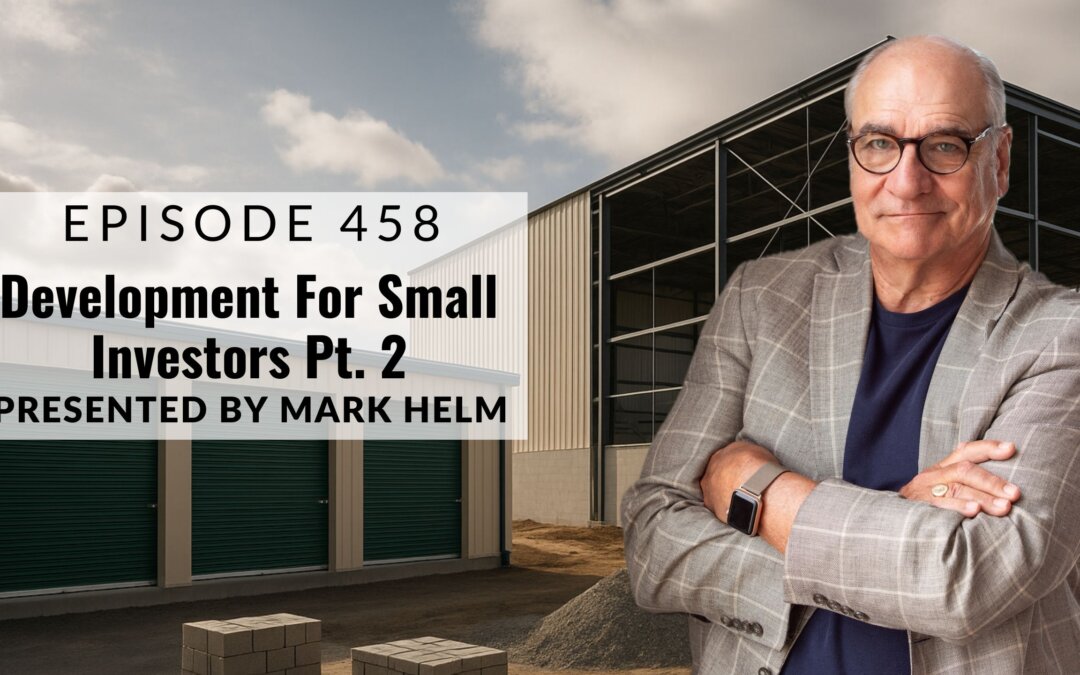Last week, we started a series outlining what our construction company uses as a general outline for developing self-storage projects in today’s uncertain world.
This series aims to bring in a development project, or an expansion or conversion, in a manner that actually pencils out financially with current interest rates, material cost, and labor cost. It is a process you can use yourself if you choose to.
The owner’s involvement in the process and decision-making is the key to the process. Also key to this process is a General Contractor’s (if one is being used) transparency or that of an Owner’s Representative or Construction Manager if being used.
If you did not watch or read last week’s episode, start there.
What we covered were the first two phases, and in many ways the most important ones. Lots of money is wasted in our experience in these first two phases.
In review, here are the five phases of our development process, with the first two phases showing the spaces we move through. Again, details on these first two phases are in last week’s episode.
Our Five Stages Of Self Storage Development
- Due Diligence/Planning & Development
- Analyze land
- Preliminary layout\
- Proforma
- LOI/Contract
- Feasibility Report
- Understand codes/approval process
- Development/Project Approval
- Survey
- Site Plan
- Development/Project Approval
- Construction
- Construction Administration & Completion
- Setting Up Operations
Today, we are going to talk about the two construction phases. Next week, we will talk about setting up operations and list some of the big mistakes people make.
Construction Phase
I usually call this “construction phase 1.” But this is the space we start moving through after we get Project Approval or Development Approval in the second phase of our development process discussed last week.
Here are the spaces we cover in this phase of construction.
- Biddable construction plans
- Value engineering
- Review of final plans, numbers and schedule
- Site disturbance permit/building plan permit
Biddable Construction Plans
In our process, here is where we turn the architect lose, and in our case, on an hourly pay basis, to take the engineered building plans from the fabricator, and with any modifications from the regulatory agencies needed for project or development approval and turn them into plans we can send to subcontractors for bids.
Yes, waiting until now to generate plans we can get bids on takes longer to get a shovel in the ground, but it sure keeps our at-risk money down by not starting this part of the process until we have approvals.
Also, if the engineer did not complete a full set of site plan drawings for development approval, we turn them down to finish so we can get bids from site work contractors (usually provided from a list from the engineer).
On larger projects, we also turn the architect loose to create MEP (mechanical, electrical, and plumbing) specs for the project. However, often, on smaller projects, we use the subs to submit what they propose, run that through our engineers and architects, and then select the one that they recommend. On a 20,000-square-foot project or so, this can really keep our engineering/architectural cost low but again adds some time to the process.
Often, I will trade time for money today because it can mean the difference between having a project financially work or not.
Value Engineering
Once the final plans are in, we sit down (often figuratively) with all the subs, engineers, architects, and owners. We see where there are any changes we can make that will reduce cost but not impact the quality or rentability of the project.
Where we often find some savings is in HVAC, amount of duck work run, altering some finish items, etc.
I had one person I know utilizing this process with a subcontractor alter the slop created in the site work drawings, which was acceptable to the county and saved over $100,000.
Review Of Final Plans And Numbers
Once we are convinced we have the plans, affected subcontractors will be invited to re-bid.
Final numbers are placed in the Proforma, and the Owner makes a go-no-go decision.
We then submit a revised schedule for construction and completion so they can compare it to other contractors if we are working for someone.
Site Disturbance Permit/Building Plan Permit
If we are working for a client, up to this point, we have worked on an hourly basis, and if selected to construct the project, we credit back the cost they have paid us in the first three phases of our development process and apply it towards the fee we charge if selected to build.
However, we do encourage the owner to get multiple bids from other contractors with the biddable plans the owner now has. This is all under the core value of full transparency, which we absolutely utilize in every aspect of our business practice.
If you are doing this process yourself, you may want to still get a bid or two to see if you want to continue on your own.
Let’s look at the next phase of development in our process.
Construction Administration & Completion
In this phase, we are building the project, managing subcontractors, and handling the issues that arise during construction.
We cover these spaces during this phase of our development process.
- Construction management
- Deferred submittals
- Optimizing unit numbering
- Walk through/Certificate of Occupancy
Construction Management
If you are doing this process yourself, you are going to need to figure out a way to have onsite supervision during the construction process. The last thing you want is for subcontractors to make decisions in the field regarding any questions they may have, not to mention scheduling and making sure they show up.
When we do projects near our home base, we usually manage this ourselves. If I was doing a project out of state, before I became a partner in a construction company, I hired construction managers to be my eyes and ears on-site during the construction phase.
If you are working with a general contractor, see how they are going to manage the construction management process. The main goal is to ensure subcontractors show up according to schedule, get questions answered, and see that corners are not being cut. If a subcontractor must figure something out on their own, in most cases, it will be what is easiest for them. This rarely is what will be good for the project.
Make sure you get onsite construction management covered effectively.
Deferred Submittals
Usually, during the construction phase, there will be items that need to be approved that were not necessarily addressed in the Development/Project approval process and/or even in the Building Plan approval.
These can slow down and even sometimes even stop a project. They must be identified quickly and handled efficiently.
Examples of these are signage, gate openers, ADA units, etc.
Often, these require regulatory approval and occur during the construction phase.
An example was a project we were expanding in North Carolina. In our building plans, we had which units would be designated as ADA units.
There are industry standards as to what makes an ADA unit. Usually, the doors have lower latches and a strap on the exterior of the door so a person in a wheelchair can open.
However, for some inexplicable reason, this was not good enough for the county regulatory agency. We had to have automatic door openers like your garage door. We had never heard of this.
In order to get around this, we were going to have to go back and get a conditional use permit, and we were not sure if it would be granted after all the conversations with our engineer and regulatory people involved.
So, we changed those doors out and added the openers. Even though this took time, energy, and resources on our part, it did not delay the opening of the project because we were on it.
I relate this story as a way to illustrate what some of the deferred submittals can be like.
Optimizing Unit Numbering
Most owners don’t think about this until the last hour, but there is real art in numbering the buildings and units.
We work with our clients to create the easiest way for customers to identify the building or the hall and find where their unit is.
I have made a lot of mistakes here over the years and want to illuminate that for our clients.
Also, we want to design the numbering system so it is easier and faster for a manager or a boots-on-the-ground person to complete a unit walk-through report. Not having a well-thought-out flow for the unit numbering makes this process slower and less effective.
Most importantly, we want customers to be able to locate their units easily.
Walk Through/Certificate of Occupancy
In our construction contract, as we work with clients, we hold back 10% of our fees for each draw. After the final walk-through with the owners, a punch list is created, then that punch list is completed. Only then do we get the 10% retainage released.
If you are handling this development process on your own, it is not always possible to hold back 10% of a subcontractor bid with each draw, but at the very least, hold back 10% of the final draw until you can do a walk through with them and create a punch list.
Then, release it when they complete the punch list.
We also scheduled the final inspection with the building inspector and requested a copy of the Certificate of Occupancy (CO).
Sometimes, we get partial COs so we can start renting units if there is still work to do. If there are multiple buildings and we feel we can start leasing without having ongoing construction interfere with customers in a building that is already completed, we may request a temporary CO for that building or building.
For our construction company, we consider the project complete when the punch list is completed and the final CO is issued.
It is my goal here to outline the development process we use for our construction company and our self-storage business. This is designed for smaller owners doing most of the projects we tend to be attracted to.
I hope this helps. Next week, we will complete this series with the final phase of our process and some of the biggest mistakes we see people make.



